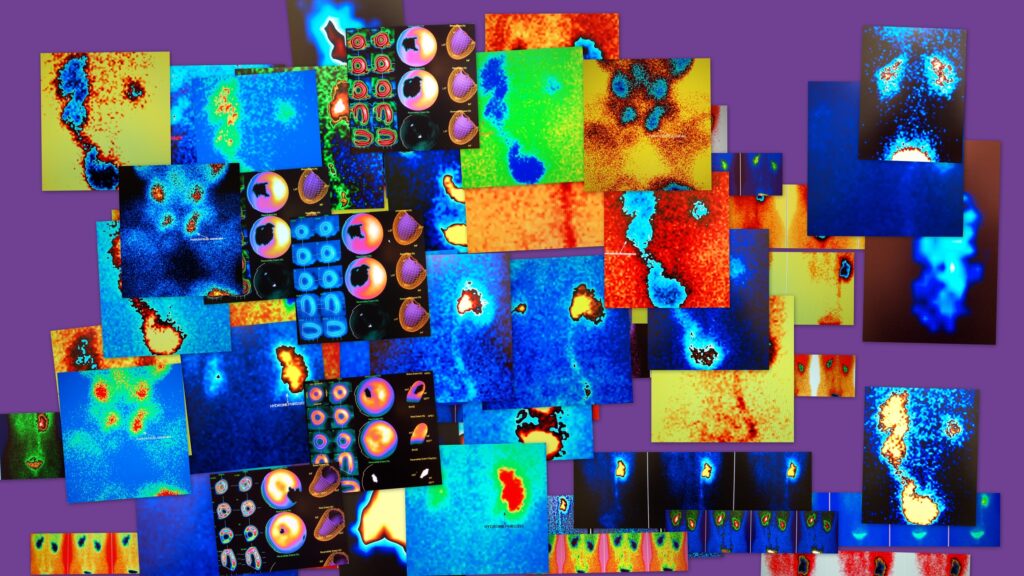Summary: Neuromorphic chips are pioneering a new direction in brain research by mimicking the brain’s structure and electrical activity. These chips replicate the way neurons and synapses communicate, providing scientists with advanced tools to study cognition, learning, and neurological disorders. Their unique architecture enables high-speed, low-power processing, bridging the gap between biological and artificial intelligence. Current research applications include disease modelling, neuroprosthetics, and real-time neural simulations. As technology evolves, neuromorphic systems are expected to revolutionise neuroscience, medicine, and artificial intelligence, while raising important ethical and philosophical questions about the nature of intelligence itself.
Keywords: Neuromorphic computing, Brain research, Spiking neural networks, Artificial intelligence, Neuroprosthetics, Cognitive modelling
Introduction
Neuromorphic technology is transforming the landscape of neuroscience. By replicating the operation of neurons and synapses, neuromorphic chips have opened new pathways for understanding how the brain processes information, learns, and adapts. Their design, inspired by biological neural structures, enables them to perform computations far more energy-efficiently and more biologically accurate than traditional digital systems.
As conventional computing reaches its limits in speed and power consumption, neuromorphic chips are becoming vital to the study of brain function and neurological disorders. These devices are already being used to simulate cognitive processes, interpret neural signals, and test treatments for neurodegenerative diseases. The ongoing integration of computing, biology, and data science is steadily redefining how scientists explore the brain.
The Foundations of Neuromorphic Engineering
Neuromorphic engineering, a concept first introduced in the late 1980s, involves the creation of hardware that behaves like a network of biological neurons. Traditional computers operate on the Von Neumann model, separating data and processing, which leads to inefficiencies due to constant data transfers. Neuromorphic chips overcome this by combining memory and processing within each unit, enabling faster computation with much lower energy demands.
These chips use artificial neurons and synapses that can emulate the brain’s electrical impulses and adaptability. Neurons communicate via spikes—brief electrical signals—that mirror the firing patterns of biological cells. This architecture enables learning and decision-making processes similar to those occurring in the human brain.
Such brain-like behaviour provides scientists with a hardware platform that can both simulate and interact with neural processes in real time, making it invaluable for experimental neuroscience and the development of artificial intelligence.
Milestones in Brain-Inspired Hardware
In recent years, the field of neuromorphic computing has advanced from conceptual frameworks to practical systems. IBM’s TrueNorth chip marked an early milestone by demonstrating large-scale neural networks implemented in silicon. Following this, Intel’s Loihi chip introduced adaptive learning directly on the hardware, allowing the chip to respond dynamically to inputs without external reprogramming.
These innovations have enabled researchers to model and analyse complex neural phenomena more efficiently than ever before. For example, the Loihi system has been used to explore how sensory information is processed and integrated in real time, while the SpiNNaker project at the University of Manchester has built a system capable of simulating millions of neurons simultaneously.
Collaborative projects, including the European Human Brain Project and the US BRAIN Initiative, have integrated neuromorphic systems into their research frameworks. Such collaborations demonstrate the growing recognition of neuromorphic hardware as a core tool in understanding large-scale brain function.
Connecting Artificial and Biological Intelligence
Neuromorphic technology represents a unique convergence between artificial intelligence and neuroscience. Conventional AI, though powerful, incurs significant energy costs and lacks the biological efficiency of the human brain. Neuromorphic chips replicate key aspects of biological learning, including event-driven communication and adaptability, which allows them to process sensory data much more effectively.
By employing spiking neural networks, neuromorphic systems transmit information only when significant changes occur, reducing unnecessary processing and imitating the way neurons fire in the brain. This allows researchers to study how the brain encodes information through timing, patterns, and network structure.
These features are being applied to brain–computer interfaces, where neuromorphic processors can interpret neural signals and translate them into physical actions. For example, brain implants powered by neuromorphic chips have been tested to restore movement in individuals with paralysis or to improve sensory feedback in prosthetic limbs.
Advancing Brain Research and Medicine
The integration of neuromorphic computing into neuroscience has created new opportunities to explore how the brain operates in health and disease. By simulating neural activity at scales from single neurons to entire brain regions, researchers can test theories of memory, perception, and cognition.
One area of significant progress is the study of neurological disorders such as epilepsy, Parkinson’s disease, and Alzheimer’s disease. Neuromorphic models enable researchers to reproduce the disrupted network behaviour seen in these conditions and to simulate how different treatments might restore balance.
In clinical applications, neuromorphic systems are advancing neuroprosthetics and brain–machine interfaces. Their ability to process neural data in real time allows for more precise control of prosthetic limbs or sensory restoration devices. Some experimental systems can even learn to adapt to the user’s neural patterns, improving performance over time without the need for reprogramming.
Neuromorphic chips are also being integrated into portable diagnostic systems. Their efficiency and low power consumption make them ideal for continuous neural monitoring, wearable medical devices, and implantable sensors that could operate autonomously for extended periods.
Efficiency and Real-Time Capability
The brain’s processing efficiency has long fascinated scientists and engineers. It operates at just 20 watts of power while managing a vast array of sensory and cognitive functions. Neuromorphic chips achieve this efficiency through asynchronous, event-driven processing, in which neurons activate only when necessary.
This mechanism drastically reduces power consumption compared with conventional processors that continuously handle data. For brain research, this efficiency allows large-scale neural simulations and real-time analysis of electrophysiological data without the need for supercomputing facilities.
For instance, neuromorphic processors can now analyse live neural recordings and provide instantaneous feedback, enabling more interactive and responsive neuroscience experiments. The same qualities make them suitable for autonomous research robots, portable neuroimaging tools, and embedded systems in medical or rehabilitation contexts.
Materials, Architecture, and Design Innovations
Advances in materials science and device architecture are shaping the next generation of neuromorphic chips. Memristors, which alter their resistance based on electrical activity, are being used to mimic synaptic plasticity—the ability of connections between neurons to strengthen or weaken over time.
These components allow neuromorphic systems to learn directly through interaction with their environment, mirroring biological learning processes. Hybrid analogue–digital architectures are also emerging, providing greater precision and control over learning dynamics while retaining the adaptability of analogue circuits.
Furthermore, three-dimensional chip designs now enable denser interconnections and improved communication between artificial neurons. This architecture more closely replicates the brain’s layered organisation, offering greater computational power in a compact space. Such developments are essential for creating realistic models of cortical networks and complex neural interactions.
Remaining Challenges
Although neuromorphic computing holds extraordinary promise, it still faces notable challenges. Scaling up neural networks while maintaining stability and accuracy remains complex. Biological systems exhibit a degree of self-organisation and adaptability that is difficult to reproduce in hardware.
Interfacing electronic systems with biological tissue also poses difficulties, as long-term stability and biocompatibility must be ensured for medical applications. Meanwhile, developing intuitive software tools for programming and controlling spiking neural networks remains a barrier to widespread adoption in neuroscience.
There are also broader questions concerning standardisation, reproducibility, and interpretability of neuromorphic experiments. As the technology advances, establishing frameworks for validation and ethical oversight will be crucial.
The Future of Neuromorphic Brain Research
The coming decade promises to be transformative for neuromorphic computing. As devices become more sophisticated, they are expected to replicate increasingly complex brain functions and provide insights into the mechanisms of thought, learning, and emotion.
The fusion of neuromorphic technology with biomedical research could lead to breakthroughs in treating mental health conditions, neurodegenerative diseases, and brain injuries. Artificial neural systems may even assist in the design of personalised therapies that adapt to each patient’s neural activity patterns.
Ethical and philosophical considerations are becoming more pressing as neuromorphic systems approach the boundaries of biological cognition. Questions about machine awareness, identity, and the merging of human and artificial intelligence are likely to shape future research agendas and policy frameworks.
Beyond medicine, neuromorphic technology could revolutionise fields such as robotics, sensor systems, and data analysis. Machines equipped with brain-like processors could learn and react intuitively, adapting to unpredictable environments and improving over time without explicit reprogramming.
Conclusion
Neuromorphic chips represent a milestone in the intersection of neuroscience and computing. By emulating the structure and operation of the human brain, these devices are enabling a deeper understanding of cognition, learning, and neurological disorders. Their energy efficiency, real-time processing capability, and adaptive behaviour have positioned them as essential tools for future research and medical innovation.
While technical and ethical challenges remain, the progress achieved in recent years signals a profound shift in how science approaches the study of intelligence. As neuromorphic technology continues to evolve, it is bringing humanity closer to replicating—and perhaps integrating—the mechanisms that make the human brain the most complex and remarkable computing system known.
Disclaimer
The article “Neuromorphic Chips: Transforming Brain Research Through Silicon Intelligence” by Open MedScience is intended for informational and educational purposes only. It does not constitute medical, scientific, or technological advice, nor should it be relied upon as a substitute for professional consultation, diagnosis, or treatment. Readers are encouraged to verify any information before acting on it and to consult qualified professionals regarding any medical or research applications discussed.
Open MedScience makes no representations or warranties, express or implied, about the accuracy, completeness, or reliability of the content. References to research projects, technologies, or companies are provided for context and do not imply endorsement. The views expressed in this article are those of the authors and contributors and do not necessarily reflect those of Open MedScience or its affiliates.
All content is provided “as is” and may be subject to change without notice. Open MedScience accepts no responsibility or liability for any loss, injury, or damages arising directly or indirectly from the use or interpretation of the information contained in this publication.
You are here: home » diagnostic medical imaging blog »



